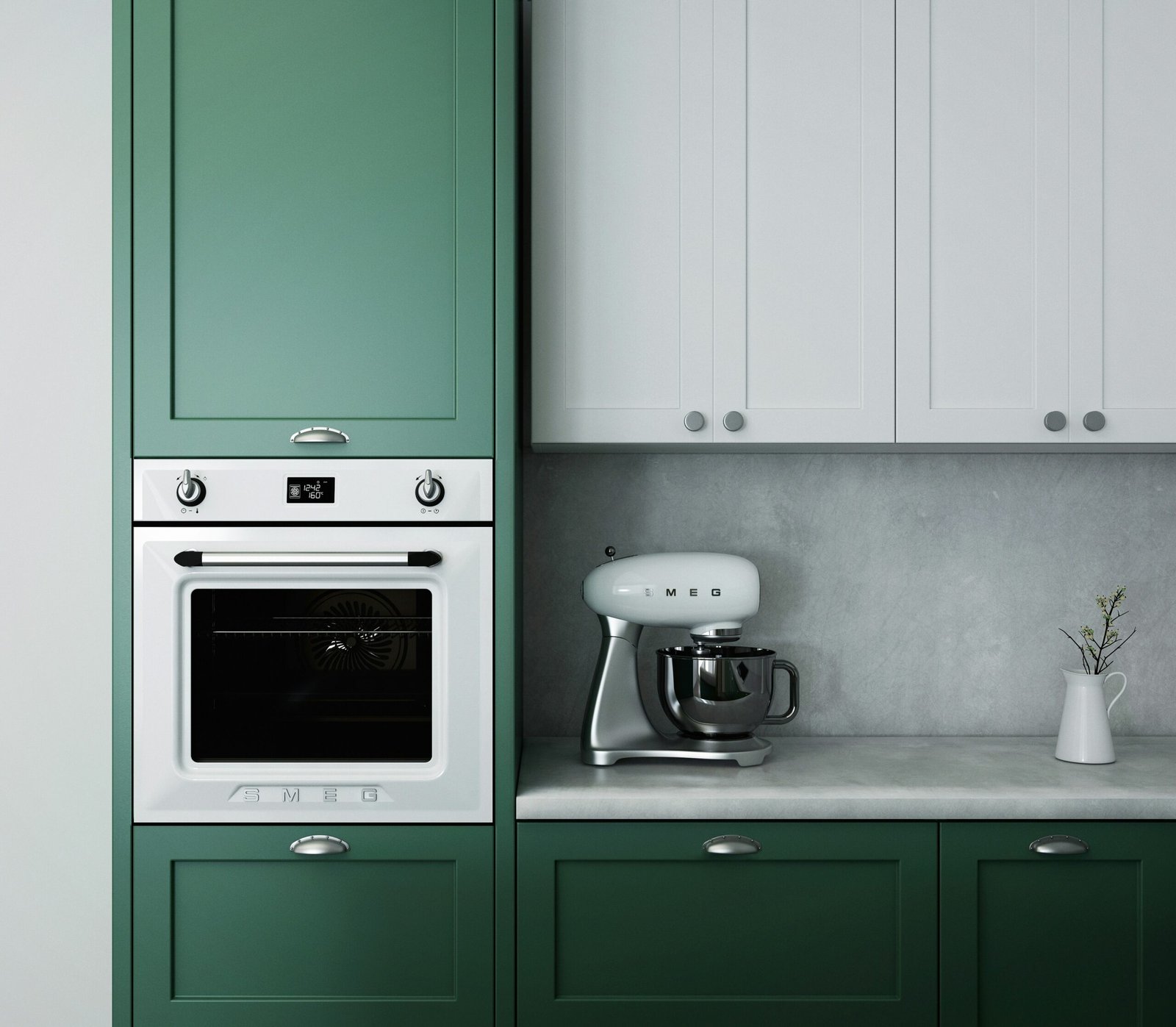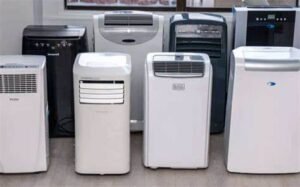Introduction to Kitchen Hoods
Kitchen hoods have become an indispensable component in modern kitchens, playing a crucial role in maintaining a clean and healthy environment. These appliances are designed to remove smoke, grease, and odors from the air, significantly improving indoor air quality. By venting out contaminants, kitchen hoods ensure that cooking spaces remain free from unwanted particles that can lead to unpleasant smells and potential health hazards.
The functionality of kitchen hoods is relatively straightforward. They consist of a fan and filter system that captures airborne particles produced during cooking. The fan draws in the air, passing it through filters that trap grease and other debris. Depending on the type of kitchen hood, the filtered air is either expelled outside or recirculated back into the kitchen. This process is essential for keeping the kitchen environment clean, reducing the accumulation of greasy residues on surfaces, and minimizing the risk of fire hazards.
When selecting a kitchen hood, it’s important to consider the various types available in the market. Wall-mounted hoods are a popular choice, often installed above the stovetop and attached to the wall. Under-cabinet hoods fit beneath kitchen cabinets, offering a space-saving solution. Island hoods are designed for kitchens with cooking islands, providing ventilation from above. Lastly, downdraft hoods are integrated into the cooktop, pulling air downward and venting it through ducts installed below the floor. Each type has its own set of advantages and is suited to different kitchen layouts and design preferences.
As we delve deeper into the topic, we will explore the factors of price, quality, and materials that should be considered when choosing the best kitchen hood in 2024. Understanding these aspects will aid in making an informed decision that balances functionality, aesthetics, and budget.
Understanding the Price Range
The price range for kitchen hoods in 2024 varies significantly, catering to different budgets and preferences. Kitchen hoods can broadly be categorized into three main price segments: budget, mid-range, and high-end. Each category presents unique features and benefits, influenced by factors such as brand reputation, additional functionalities, and the size and power of the hood.
Budget kitchen hoods are typically priced between $100 and $300. These models often offer essential functions, such as basic ventilation and lighting, but may lack advanced features. Brands like Broan and Cosmo provide reliable options within this range. While budget hoods may not boast the latest technology, they are suitable for those seeking a cost-effective solution that meets basic kitchen ventilation needs.
Mid-range kitchen hoods, priced between $300 and $1,000, offer a balance of quality and affordability. These models often include enhanced features such as adjustable fan speeds, improved filtration systems, and quieter operation. Brands like GE and Whirlpool fall into this category, offering a variety of designs and finishes to match contemporary kitchen aesthetics. Mid-range hoods are ideal for homeowners looking for a combination of functionality and style without breaking the bank.
High-end kitchen hoods, starting at $1,000 and going upwards of $3,000, represent the pinnacle of kitchen ventilation technology. These models boast advanced features such as smart technology integration, superior noise reduction, powerful extraction rates, and sleek, custom designs. Premium brands like Thermador and Viking lead this segment, offering luxurious options that cater to gourmet kitchens and high-end home designs.
Several factors influence the price of kitchen hoods. Brand reputation plays a crucial role, as well-established brands often command higher prices due to their reliability and quality. Additional features like smart technology, automatic sensors, and noise reduction capabilities also contribute to the cost. Furthermore, the size and power of the hood directly impact the price; larger, more powerful units designed for heavy-duty use are generally more expensive.
To find the best deals within each price range, consider shopping during sales events or exploring online marketplaces for discounts. Reading customer reviews and comparing models can also help ensure value for money. Look for warranties and after-sales support as indicators of long-term reliability, and prioritize features that align with your specific kitchen needs.
Evaluating Quality: Key Features to Look For
When selecting a kitchen hood, understanding the quality aspects is paramount to ensuring a reliable and efficient appliance. One of the primary indicators of a kitchen hood’s performance is its ventilation power, typically measured in cubic feet per minute (CFM). A higher CFM rating indicates a more powerful hood, capable of effectively extracting smoke, steam, and cooking odors from the kitchen. For optimal performance, choose a hood with a CFM rating that matches the size and cooking style of your kitchen.
Another critical feature is the type of filters used. Kitchen hoods generally come with charcoal, baffle, or mesh filters, each offering distinct advantages. Charcoal filters are known for their ability to neutralize odors, making them ideal for recirculating hoods. Baffle filters, often constructed from stainless steel, are highly efficient in trapping grease and are easy to clean, enhancing the durability of the hood. Mesh filters, made from layered aluminum or stainless steel, provide a balance between cost-effectiveness and performance, although they may require more frequent cleaning.
Noise levels are also a significant consideration. High-quality kitchen hoods are designed to operate quietly, even at higher speeds. Look for models that specify their noise levels in sones or decibels, ensuring a quieter cooking environment. A well-built hood should offer a balance between powerful extraction and minimal noise.
Beyond these fundamental features, additional functionalities can greatly enhance the user experience. LED lighting provides bright, energy-efficient illumination over the cooking area, improving visibility. Touch controls offer a modern and intuitive interface, while smart connectivity allows for remote operation and integration with home automation systems. These advanced features not only improve functionality but also add to the convenience and sophistication of the kitchen.
In summary, when evaluating the quality of kitchen hoods, focus on ventilation power, filter efficiency, noise levels, and overall build quality. Incorporating advanced features like LED lighting, touch controls, and smart connectivity can further enhance the performance and user experience, ensuring a high-quality and reliable kitchen hood.
Choosing the Right Materials for Your Kitchen Hood
When selecting a kitchen hood, the choice of material is crucial as it significantly affects both aesthetics and functionality.
Each material offers unique advantages and potential drawbacks, influencing not only the look and feel of your kitchen but also the maintenance and durability of the hood.
Stainless steel remains a popular choice for kitchen hoods due to its sleek, modern appearance and durability. It is highly resistant to rust and stains, making it an excellent long-term investment. Additionally, stainless steel is easy to clean, a significant advantage in a kitchen environment. However, it can be prone to fingerprints and smudges, so regular wiping is necessary to maintain its pristine condition.
Tempered glass is another favored material, particularly for those seeking a contemporary and elegant design. It offers a light and airy feel, which can make a kitchen appear more spacious. Tempered glass is also relatively easy to clean and is resistant to heat and scratches. However, it requires careful handling to avoid breakage, and any smudges or grease marks can be more visible compared to other materials.
Aluminum is valued for its lightweight properties and resistance to corrosion. It is less expensive than stainless steel and can be an attractive option for budget-conscious buyers. However, aluminum is not as durable and can dent more easily. It also requires regular maintenance to keep its shine.
In 2024, kitchen hood design trends are evolving with a focus on matte finishes and custom color options. Matte finishes offer a sophisticated and understated look, minimizing the appearance of smudges and fingerprints. Custom color options allow homeowners to match their kitchen hood with their overall kitchen décor, providing a personalized touch.
Maintenance requirements vary depending on the material. Stainless steel hoods need regular wiping to prevent smudges, while tempered glass hoods require gentle cleaning to avoid scratches. Aluminum hoods should be polished periodically to maintain their appearance. Considering your kitchen’s design and your lifestyle needs will help you choose the best material for your kitchen hood, ensuring it complements your space while being practical to maintain.
If you’re interested in purchasing the item you seek, please click the link for additional details: #americanachoice.
https://amzn.to/3SBN3Oy
AFFILIATE DISCLOSURE:
As an affiliate of this company, I earn from qualifying purchases. I am not on the payroll. Clicking on links and making a purchase may result in a commission for me.



